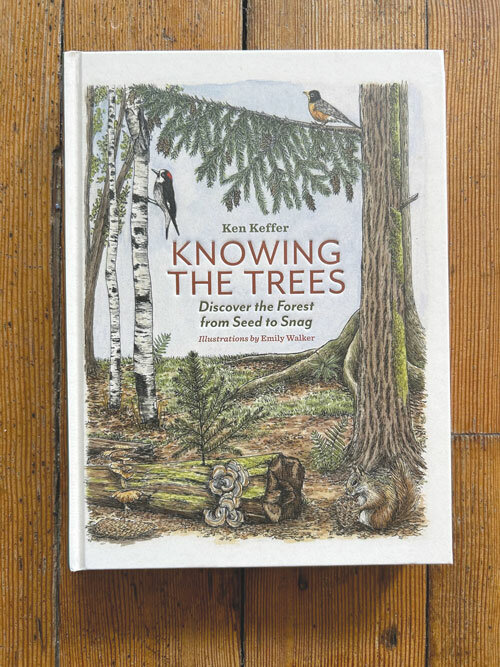Ken Keffer, Mountaineers Books

Towering, ancient, massive: trees inspire wonder and curiosity all on their own. They also create the scaffolding for the layers of interconnected diversity that make up the forest. From the whirling maple seed to the nursery log where it will sprout, author Ken Keffer takes us on a journey through the life cycle of trees but also invites us to “see the forest and the trees.”
This is a good book for sipping, with chapters divided into short sections that stand alone as satisfying micro-reads. Meaty science lessons, quirky trivia and slices of history weave together to create a biography of the forest biome.
On mistletoe, we learn that this holiday kissing ornament is a hemi-parasite, who conducts some photosynthesis (you can learn all about that 20 pages earlier) but gets most of its food and water by sucking it out of the host tree like an arboreal vampire. The Anglo-Saxon roots of its name basically translate to “poop-on-a-stick,” because it spreads through bird droppings. Isn’t that romantic?
Honey locust trees mostly spread by suckers because their seed-spreading friends are extinct. As evidenced by seeds and pods found in preserved mastodon scat, the giant herbivore used to spread the seeds of the honey locust, not minding the sharp thorns and leathery casing on the fruit. Theses days no animals are willing to brave it, so the tree has no way to spread its seeds.
The world’s largest living organism is a grove of quaking aspen named Pando. While the oldest of its 50,000 stems are 150-years-old, its root system is 80,000-years-old. The oldest individual tree is a 4,850-year-old bristlecone pine named Methuselah. The tallest redwood measured is higher than the Statue of Liberty.
Trees are the heart of the book and the thread that ties it all together, as they are to the ecology of the forest. Beyond being a compendium of tree lore, “Knowing the Trees” highlights the relationships between the land, plants and animals of the forest and our own connection to them.
Tristan Gooley, The Experiment Publishing

If you were to take a walk in the woods with Tristan Gooley I imagine it would be a slow one. Known as “the natural navigator,” Gooley has spent decades learning what nature can tell him about where he is and teaching others to see and interpret those signs. His newest book, “How to Read a Tree,” lets you take his powers of observation on your next hike or neighborhood stroll, and mundane details suddenly become full of meaning. From southern facing “eyes” on trunks or bluish needles, to “elephant’s toes” and asymmetric shapes, trees can speak volumes about where they are and what’s going on.
A hallmark of Gooley’s books is his joyful bantering about what he sees while he’s exploring the natural world, and what he learns from it. His enthusiasm is contagious and makes you want nothing more than to get a little lost in the woods and let the trees lead you. X